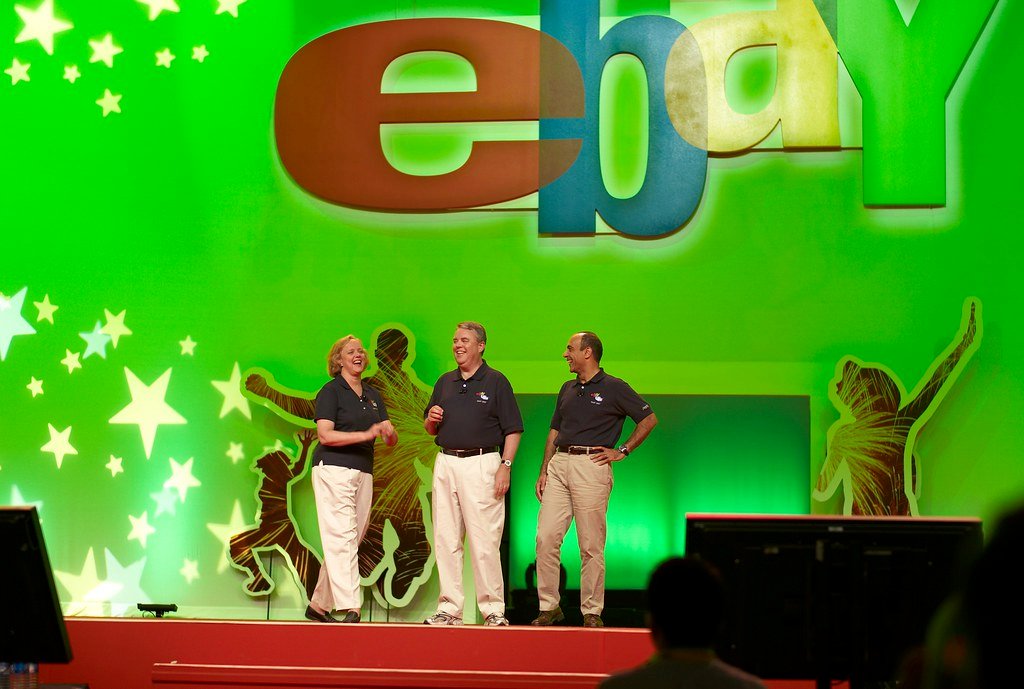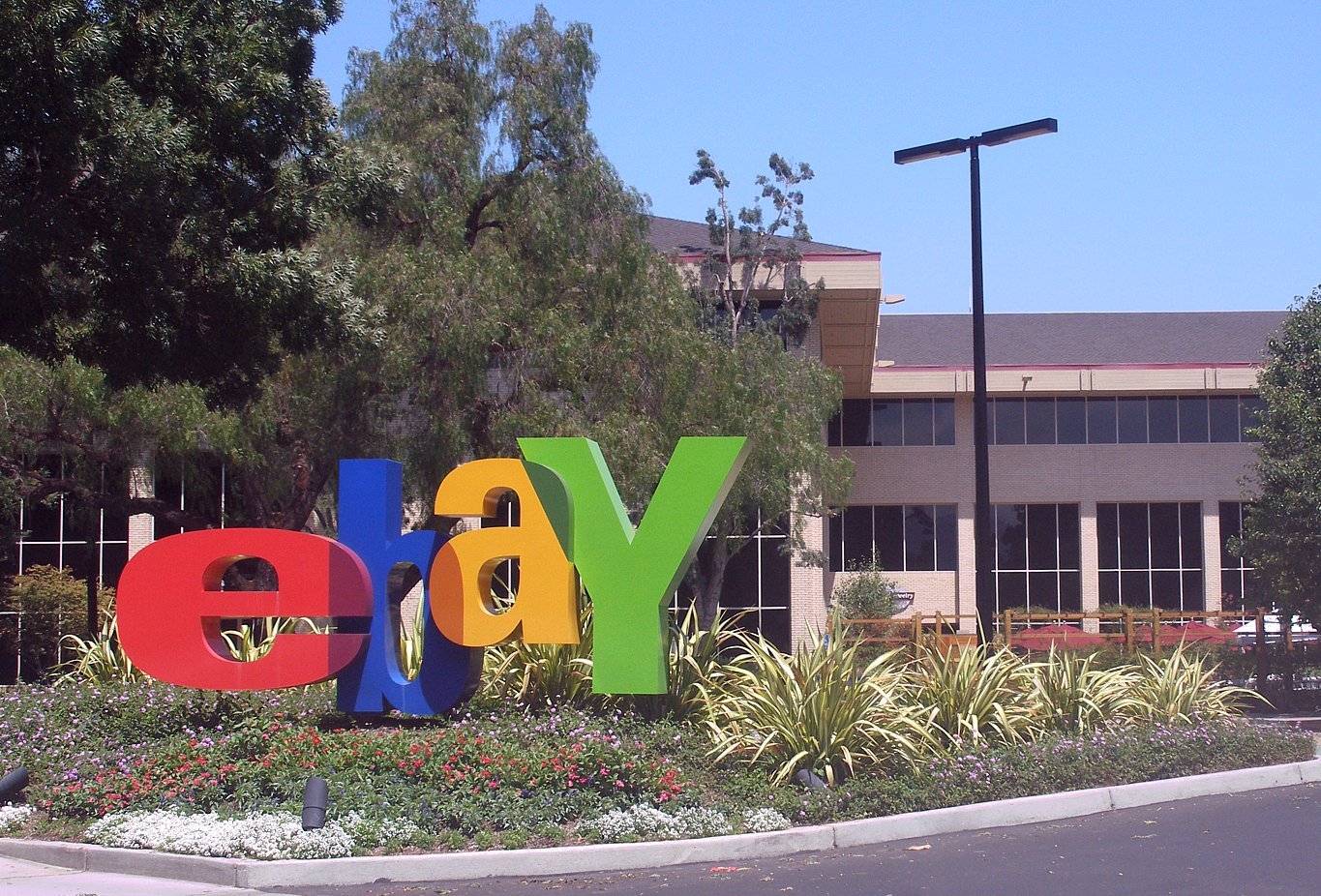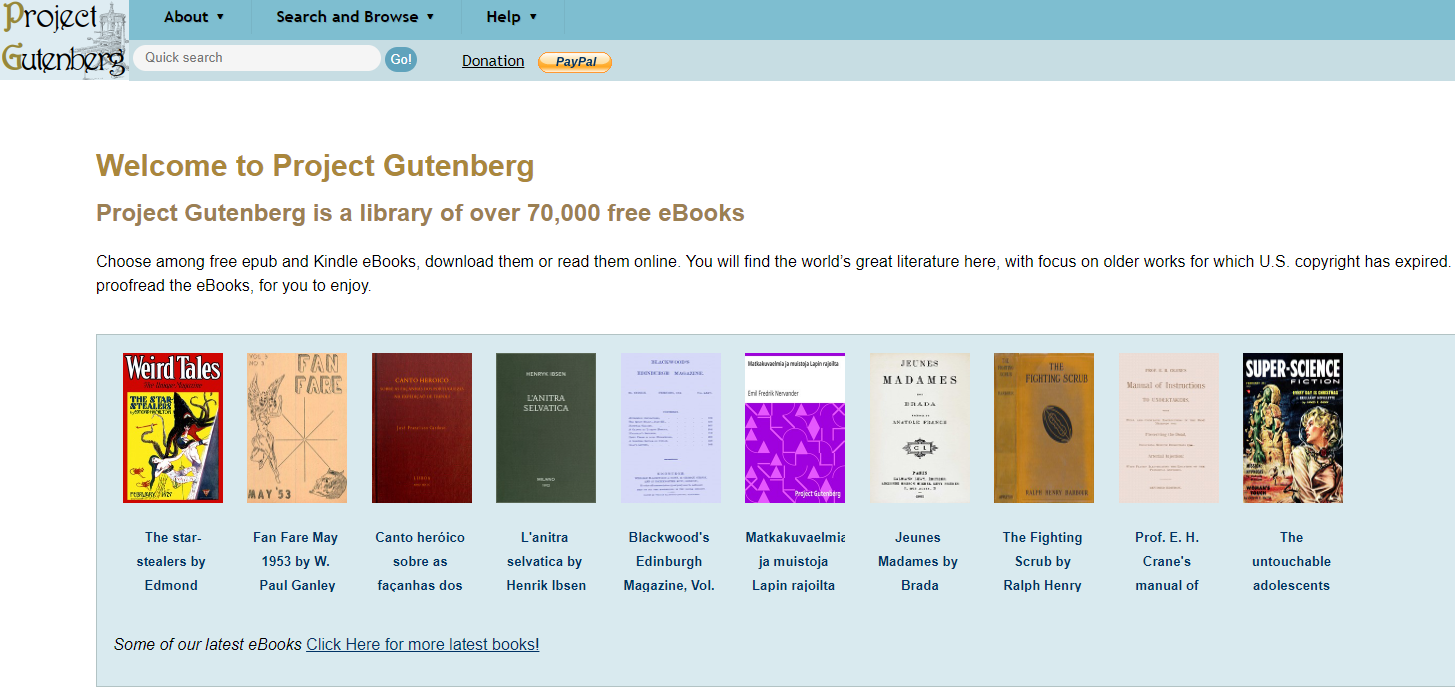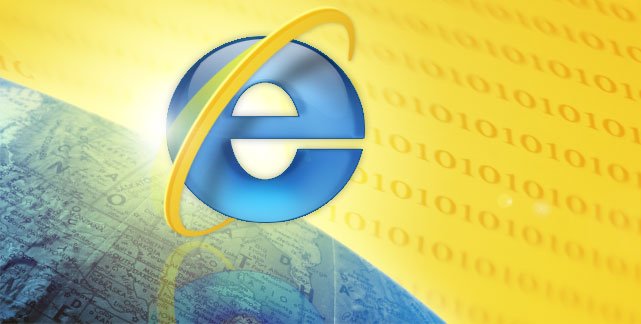The history of eBay is a fascinating journey from a simple experiment in online selling to a global e-commerce giant. Founded in 1995 during the early days of the World Wide Web, eBay pioneered the concept of online auctions and forever changed how people buy and sell goods. Over the decades, this platform has evolved from a niche auction site into a massive online marketplace hosting millions of transactions. Along the way, eBay’s story has been marked by rapid growth, game-changing acquisitions like PayPal, and challenges that tested the company’s resilience. In this comprehensive look at the history of eBay, we’ll explore how Pierre Omidyar, eBay’s founder, turned a weekend project into an Internet commerce powerhouse.
We’ll delve into eBay’s early disruption of traditional retail, its IPO and international expansion, major milestones such as acquiring PayPal and Skype, and the evolution of eBay’s business model from auctions to a more structured marketplace. We’ll also discuss the impact of eBay on e-commerce history, touching on digital entrepreneurship and how eBay empowered a generation of online sellers. Finally, we’ll examine controversies and challenges – from fraud and competition to regulatory hurdles – and reflect on eBay’s legacy in the world of online marketplaces. Grab a front-row seat as we journey through eBay’s past and present, uncovering how a single website transformed commerce across the globe.
Table of Contents
Origins of eBay: Pierre Omidyar’s Vision in 1995
Every monumental company has an origin story, and eBay’s begins in a modest way. In 1995, Pierre Omidyar, a 28-year-old computer programmer, launched a simple website called AuctionWeb as a personal side project. Little did he know, this hobby project would sow the seeds for one of the biggest names in e-commerce. Omidyar’s vision was to create an online auction platform – a digital marketplace where anyone could list an item for sale and others could bid on it. It was an idea born out of the early Internet era’s promise: connecting people directly, beyond geographical boundaries.
At the time, the notion of strangers buying and selling to each other online was revolutionary. Remember, in the mid-90s there was no Facebook Marketplace, no Etsy, and Amazon was just a nascent online bookstore. Omidyar spent Labor Day weekend of 1995 writing code for his new site, initially hosted on his personal web page. On September 3, 1995, AuctionWeb went live with a simple mission statement: to bring together buyers and sellers in an honest and open marketplace. That straightforward goal would underpin eBay’s community-driven ethos for years to come.
Pierre Omidyar eBay founder – this phrase became synonymous with the entrepreneurial spirit of the early Internet. Omidyar’s approach was as much social experiment as business venture. He believed that people are basically good and that given the right platform, strangers could trade with trust. To test the waters, he listed a few items of his own for sale. In an almost legendary first transaction, a broken laser pointer (essentially junk from Omidyar’s drawer) was put up for auction. To his astonishment, someone actually bought it – for $14.83! Curious and perhaps skeptical, Omidyar contacted the buyer to make sure they knew the laser pointer was broken.

The buyer responded with something that has since become startup lore: he was a collector of broken laser pointers. This quirky first sale demonstrated the potential of an online person-to-person marketplace. If even a broken gadget could find a willing buyer on the Internet, what couldn’t be sold online? The early success of these odd listings convinced Omidyar that his idea had real merit. By the end of 1995, AuctionWeb was hosting thousands of auctions, fueled by niche collectors and hobbyists who finally had a venue to trade items that previously had only local markets.
Interestingly, a popular myth arose around eBay’s founding that adds a fun twist to the origin story. For years, people believed that Pierre Omidyar created eBay to help his fiancée trade Pez dispensers (those collectible candy dispensers). According to the tale, his fiancée had a Pez collection and wanted a way to trade with other collectors online. This heartwarming story made for great press, but it wasn’t actually true – it was a fabrication by eBay’s early PR team to give the media a catchy narrative! In reality, eBay wasn’t born for Pez collectors specifically, but the myth itself speaks to eBay’s early focus on collectables and unique items.
Whether it was Pez dispensers, Beanie Babies, coins, or vintage toys, AuctionWeb quickly became a magnet for collectors and enthusiasts. By 1996, the site’s popularity was exploding through word of mouth, and Omidyar had to upgrade his web server and internet service due to the surge in traffic. He even started charging small fees to sellers to cover the rising costs – a move that essentially became eBay’s business model of taking a commission on sales. That year, Omidyar brought on his first employee, and soon quit his day job to devote himself fully to the rapidly growing auction site. AuctionWeb had proven that strangers on the internet could conduct business safely, and a new era of commerce was underway.
Online Auctions: A New Era of Commerce
When eBay (still called AuctionWeb in the early years) came onto the scene, it introduced online auctions as a new way to buy and sell – and in doing so, it disrupted traditional commerce. Before online marketplaces, if you wanted to sell something second-hand or find a rare collectible, your options were limited. You might go to a local flea market, host a garage sale, place a classified ad in the newspaper, or attend a live auction house.
These options were local and often inefficient, limiting buyers and sellers to a small geographic area. eBay’s online auctions changed all that. Suddenly, anyone with an Internet connection could reach a global audience for their grandma’s antique vase or that out-of-print comic book stashed in the attic. This was a game-changer: eBay took the age-old concept of auctions and supercharged it with the global connectivity of the web.
The early concept was simple yet powerful: sellers would list items on the site, set a starting price, and buyers would place bids over a set period (usually a few days). The highest bidder at the end would win the item. It was exciting and interactive, often leading bidders into last-minute bidding wars just like in a real auction house – except it was happening on a website accessible from home. People found it thrilling to watch an item’s price climb as the clock ticked down.
More importantly, buyers could find virtually anything on these auctions, often at a good price, and sellers could unearth willing buyers for items that might have languished unsold locally. In essence, eBay created liquidity for used and rare items on an unprecedented scale, making it a pioneer in e-commerce history.
One early category that exemplified eBay’s disruptive power was collectibles. A famously telling example is the Beanie Babies craze in the late 1990s. Beanie Babies – those small plush toys – became hot collector’s items, and many were hard to find in stores. eBay became the go-to marketplace for Beanie Baby trading. By 1997, it’s said that Beanie Babies accounted for a staggering 5–10% of all listings on eBay!
That kind of volume for a single toy line showed how effective online auctions were for meeting collector demand. For many consumers, eBay was their first experience buying something from a stranger online. The novelty of finding rare treasures from halfway around the world – and the competitive fun of bidding – made eBay a cultural phenomenon.
Of course, this new model required a foundation of trust between buyers and sellers. Trading with anonymous strangers on the internet doesn’t automatically feel safe. eBay recognized early on that building a trustworthy community was crucial. To address this, they introduced the Feedback Forum (around 1996), which let buyers and sellers rate each other after each transaction. It was a simple yet brilliant reputation system: if a seller delivered items as promised, buyers would leave positive feedback, and vice versa. Over time, sellers built up feedback scores that signaled their reliability to potential customers. This reputation system created accountability and gave users confidence that they weren’t going to get ripped off.
It was one of eBay’s key innovations and a major reason online auctions gained traction. People often checked a seller’s feedback rating before bidding hundreds of dollars on an item. The feedback mechanism, along with eBay’s policies against fraud, helped foster an online community built on trust. In effect, eBay disrupted traditional commerce not just by moving it online, but by creating new tools to facilitate trust between total strangers – something brick-and-mortar retail didn’t have to worry about in the same way.
By the late 90s, the eBay online auctions model was proving its worth. The platform had enabled a new era of consumer-to-consumer (C2C) commerce. Grandma’s attic could now become a storefront to the world, and collectors of every stripe – from coin enthusiasts to sneakerheads – had a gathering place to find what they wanted.
Traditional retailers began to take notice, as eBay provided an alternative to buying new; why pay full price when you might win an auction for less? Small businesses also saw opportunity: eBay was a low-cost way to reach customers globally without opening a physical store. The stage was set for eBay’s explosive growth, as online shopping started to go mainstream. It was time for the little auction site that could to grow up and enter the big leagues of business.
Rapid Growth and New Features in the Late 1990s
eBay’s growth in the late 1990s was nothing short of astonishing. What started as Pierre Omidyar’s one-man website quickly blossomed into a company with employees, investors, and a booming user base. By 1997, just two years after launch, the site (now officially renamed eBay) had hosted millions of auctions and caught the attention of venture capitalists. The renaming from AuctionWeb to eBay happened in September 1997 – the name “eBay” came from Omidyar’s consulting firm Echo Bay. (Fun fact: he wanted the domain echobay.com, but it was taken by a gold mining company, so he shortened it to eBay.com.) With a snappy new name and a rapidly expanding audience, eBay was poised for prime time.
One of the pivotal moments in eBay’s early growth was bringing in experienced leadership. In March 1998, Meg Whitman was hired as eBay’s president and CEO. Pierre Omidyar was a visionary founder, but he recognized the need for seasoned business management to guide the company’s next phase. Whitman, coming from traditional business backgrounds (Hasbro, Disney, etc.), provided exactly that. When she joined, eBay had around 30 employees and half a million users – still a relatively small outfit, but growing fast.

Under Whitman’s leadership, things really took off. By mid-1998, eBay was generating millions in revenue (reportedly about $4.7 million in 1998) and proving that its revenue model – charging sellers fees to list items and a commission when items sold – was highly profitable. In an era where many dot-com startups were burning cash with no profit in sight, eBay stood out by actually making money. This made eBay an attractive candidate for the stock market.
The eBay IPO and Dot-Com Boom
In September 1998, eBay made its Wall Street debut with an Initial Public Offering (IPO) that captured headlines. The eBay IPO was emblematic of the late-90s dot-com boom: investor frenzy, skyrocketing stock prices, and instant millionaires. Initially expected to price at $18 per share, eBay’s stock opened to such high demand that it surged as trading began. By the end of the first day, eBay’s share price had shot up to around $53 – nearly triple the IPO price in mere hours.
This spectacular debut reflected the market’s belief that eBay was going to be huge. Indeed, the company’s valuation vaulted into the billions, and Pierre Omidyar and early investors saw their stakes multiply dramatically. It was official: eBay had graduated from quirky internet startup to one of the hottest companies in tech.
Going public not only provided eBay with a significant capital influx to fund growth, but it also raised the company’s profile globally. Suddenly, everyone was talking about eBay. People who had never used the site before were now curious: “What is this online auction thing all about?” The IPO publicity brought in waves of new users eager to give internet shopping a try. eBay responded to the growth by rapidly expanding its infrastructure and feature set.
During this period (late 1998 into 1999), eBay introduced My eBay (a personalized page for users to track their buying and selling activity), and it started to refine its category listings as the range of items exploded. No longer just collectibles, eBay’s categories grew to include electronics, clothing, appliances – pretty much anything you can imagine. The tagline “You can find it on eBay” really started to ring true.
An early snapshot of eBay’s website (circa 1999) shows the simple, text-driven design and category listings that characterized the site during its initial boom. In those days, eBay’s homepage featured a list of product categories (from antiques to toys to computers) and highlights of ongoing auctions. By modern standards, the design was rudimentary – lots of blue links and very little imagery – but it got the job done.
The focus was on functionality: helping users browse items and place bids. Notably, even in 1999, the site proudly displayed stats like “2,967,077 items for sale” and “over 1.5 billion page views per month,” evidence of how quickly eBay had become a high-traffic destination. This period also saw eBay cultivating its community through messaging boards and even in-person user events. The sense of community among buyers and sellers was a big part of eBay’s identity and growth strategy; loyal users were eBay’s best evangelists.
Growth, of course, was not without growing pains. In mid-1999, eBay experienced a high-profile site outage – the website went down for nearly 22 hours due to technical issues, leaving furious users and frantic engineers scrambling. At the time, that outage highlighted how critical eBay had become for many people’s livelihoods (some power sellers were essentially running full-time businesses on eBay by then). CEO Meg Whitman took the outage as a wake-up call, famously rallying her tech team in the middle of the night to fix the problems and improve the site’s infrastructure.
This incident underscored the responsibility eBay had: it was no longer a casual hobby site; people around the world depended on it. After that, eBay invested heavily in making the platform more robust and scalable. Sure enough, the site continued to hum along as more and more users joined the fray. By 2000, eBay had millions of registered users and was expanding beyond the U.S. market.
Going Global and Expanding the eBay Marketplace
Flush with IPO cash and riding a wave of popularity, eBay in the late 1990s and early 2000s set its sights on global expansion. The company’s goal was to extend its online marketplace model to audiences worldwide, essentially eBay international expansion. It wasn’t enough to dominate the U.S. market – eBay wanted to be the marketplace for the whole internet. In 1999, eBay launched localized websites in some key markets: the United Kingdom, Germany, and Australia were among the first international eBay sites. Rather than expecting everyone to use the U.S.-based site, eBay wisely created country-specific versions tailored to local languages and currencies, while keeping the core platform consistent.
These international launches were hugely successful, especially in countries like Germany where online auctions quickly gained popularity. In Germany, eBay’s move was bolstered by acquiring a local auction site (Alando.de) and rebranding it as eBay Germany. Similar strategies played out elsewhere: eBay didn’t always build from scratch; it often acquired local competitors to jump-start its presence (for example, eBay acquired iBazar in France in 2001, and a few years later, the company bought India’s Bazee.com to enter the Indian market).
As eBay expanded into Asia, it encountered both opportunities and challenges. In 2002, eBay entered the Chinese market by acquiring a platform called EachNet. However, China would prove tough – by mid-2000s a homegrown rival, Alibaba’s Taobao, outcompeted eBay, leading eBay to shut down its main Chinese site by 2007. Meanwhile, in other regions like Latin America and Europe, eBay steadily grew by localization and strategic partnerships.
By the early 2000s, eBay was available in dozens of countries, illustrating the universal appeal of online buying and selling. The global marketplace was becoming a reality: a collector in London could bid on an item from a seller in New York, while an Australian family could sell memorabilia to a buyer in Germany. E-commerce was transcending borders in a way traditional retail never could.

On the product front, eBay wasn’t just expanding geographically in this era – it was also broadening what could be bought and sold on the platform. New categories and features were introduced to enhance the marketplace. For instance, in 1999–2000, eBay launched eBay Motors, a dedicated section for cars and automotive parts. Buying a car on the internet was a radical idea at first, but it quickly took off; eBay Motors became one of the largest used car markets in the U.S. within a few years. To support higher-value transactions like vehicles, eBay implemented extra protections (like escrow services) to boost buyer confidence.
Another significant addition was the introduction of Half.com in 2000 – a site eBay acquired that focused on fixed-price sales of books, music, and movies (especially used textbooks). Half.com was eBay’s first foray into fixed-price listings, a departure from the auction-only model. It turned out that not everyone wanted to bid; sometimes people just wanted to “Buy It Now.” Sensing this, eBay integrated the Buy It Now feature into its main site in late 2000. “Buy It Now” allowed sellers to offer an item at a set price in addition to the auction. A buyer could either bid or pay the fixed price to purchase immediately. This feature was wildly popular and marked the beginning of eBay’s evolution beyond pure auctions.
During this time, eBay also rolled out eBay Stores, which let high-volume sellers set up customized storefronts within eBay. For a small subscription fee, sellers got their own mini-shop page and branding, making it easier to showcase all their listings. This was part of a broader shift to accommodate businesses on eBay, not just individual casual sellers. Mom-and-pop sellers who had built successful operations on eBay now had more tools to grow their digital entrepreneurship.
Indeed, by the early 2000s, a new breed of entrepreneur emerged: the eBay PowerSeller. These were people (or small companies) who did such high volume on eBay that it became their full-time job. eBay recognized this and created the PowerSellers program, offering certain perks to top sellers. It was now clear that eBay wasn’t just a fun auction hobby site; it was a serious e-commerce platform and an income source for thousands of small businesses.
The early 2000s also saw eBay making headlines with some truly unusual and record-setting sales, underscoring the adage that “you can find anything on eBay.” From a $168 million mega-yacht (the most expensive item sold on eBay at that time) to a grilled cheese sandwich allegedly showing the face of the Virgin Mary (which sold for $28,000!), the press loved highlighting eBay’s wacky and wild auctions. These stories, while sometimes bizarre, actually helped cement eBay’s place in pop culture. They demonstrated the sheer scale and variety of the marketplace.
Meanwhile, eBay kept refining its platform with behind-the-scenes improvements: better search algorithms to help users find items, safer payment options (more on that next), and customer support to handle the increasing volume of transactions. By the mid-2000s, eBay was firmly established as a leading light of e-commerce, alongside the likes of Amazon. But to stay on top, eBay would take some bold steps, including making one of its most important acquisitions ever – an acquisition that would forever link the names eBay and PayPal.
Major Milestones: eBay IPO, Acquisitions, and Global Power Plays
As eBay grew, the company strategically acquired other businesses and technologies to complement and strengthen its marketplace. Some of eBay’s acquisitions turned out to be game-changers that propelled the company to new heights. Here are a few of the major milestones and acquisitions in eBay’s journey from auction startup to e-commerce giant:
- Initial Public Offering (1998): We discussed the eBay IPO earlier, but it’s worth highlighting as a milestone. The IPO not only validated eBay’s success in the eyes of investors, but it also gave eBay the currency (cash and stock) to go shopping for other companies. In the years following 1998, eBay would use its rising stock value to acquire companies that expanded its reach.
- PayPal (Acquired 2002): Perhaps the most significant acquisition in eBay’s history was PayPal. PayPal was a young online payments company that had become extremely popular on eBay’s platform. In the early days, how did people pay for eBay purchases? It might surprise you, but at first many transactions were completed with money orders or mailed checks! This was inconvenient and slow. A lot of sellers and buyers started adopting PayPal because it let them send money instantly via email. By 2001, PayPal was essentially the de facto payment method for eBay sales, even though it was a separate company. Recognizing the synergy, eBay acquired PayPal in 2002 for roughly $1.5 billion. This move unified the web’s largest marketplace with a cutting-edge digital payment system. By bringing PayPal in-house, eBay made transactions smoother and more secure for users. Buyers gained confidence knowing they could pay easily, and sellers benefited from faster, guaranteed payments. Over the next decade, eBay and PayPal grew hand-in-hand, dominating both e-commerce and online payments. (PayPal’s buyer protection programs also helped reduce fraud on eBay, another big plus.) It’s worth noting that PayPal eventually grew so large that eBay spun it off as an independent company in 2015 – but during those years together, the eBay-PayPal partnership was incredibly powerful and profitable for both sides.
- Skype (Acquired 2005): Not every acquisition was as successful as PayPal. In 2005, eBay surprised the market by purchasing Skype, the popular internet voice-call service, for about $2.6 billion. The rationale was that communication between buyers and sellers, especially for high-ticket items like cars or expensive electronics, could be facilitated by Skype’s technology – imagine being able to easily call or video-chat with a seller to ask questions about an item. However, this integration never really took off. Many felt Skype was a bit outside eBay’s core competency. After a few years, eBay decided to cut its losses and sold a majority stake in Skype in 2009 (ultimately Skype ended up with Microsoft). The Skype experiment taught eBay a lesson about focusing on its strengths, but it’s still a noteworthy milestone in showing eBay’s ambition to branch out. Plus, eBay did recoup a good chunk of the investment when Skype was later resold.
- StubHub (Acquired 2007): In 2007, eBay made a smart move in the live events space by acquiring StubHub, a leading online ticket marketplace. StubHub allowed people to buy and sell tickets for concerts, sports games, theater shows, etc. This was a natural extension for eBay’s marketplace philosophy – after all, people were already selling event tickets on eBay’s main site. StubHub, however, specialized in it and provided a platform tailored for ticket resale (with seat maps, instant delivery of e-tickets, etc.). By purchasing StubHub for about $310 million, eBay instantly became the biggest player in the secondary ticket market. StubHub continued to operate as a separate brand but benefited from eBay’s resources and user base. It was a success story; in fact, StubHub grew so much that eBay later sold it in 2020 for over $4 billion (showing how valuable it had become).
- Classifieds and Others: eBay also expanded into online classifieds and other niches. In 2005, it launched Kijiji, a Craigslist-like classifieds site for local communities, and acquired Gumtree, a popular classifieds site in the UK and Australia. These moves were aimed at capturing users who preferred local pick-up and sales (for items like furniture or jobs and services). Additionally, eBay bought companies like Rent.com (rental housing listings) and Shopping.com (a comparison shopping site) to widen its e-commerce portfolio. Not every acquisition was a hit, but each was part of eBay’s strategy to be a comprehensive e-commerce ecosystem.
By the end of the 2000s, thanks to these milestones and acquisitions, eBay was not just an auction site – it was a multifaceted e-commerce empire. The core marketplace continued to churn out profits, PayPal was a superstar in online payments, StubHub dominated ticket resales, and eBay had a presence in classifieds and international markets. The company’s revenue and user numbers grew steadily through the 2000s.
eBay also navigated the dot-com bust of 2000–2001 better than most; while many internet companies failed in that crash, eBay emerged relatively unscathed because its business model was solid and profitable. Under CEO Meg Whitman’s decade-long tenure (1998–2008), eBay went from a scrappy startup to a Fortune 500 company. In 2008, Whitman handed the reins to John Donahoe, who would oversee eBay during the next era – one that required adapting to new competitive realities and continuing the company’s evolution.
Impact of eBay on E-Commerce and Digital Entrepreneurship
It’s hard to overstate the impact of eBay on internet commerce. eBay was a trailblazer that showed the world what online marketplaces could do. In the process, it changed consumer behavior and opened the door for a new kind of entrepreneur. Let’s break down some key areas of impact:
1. Empowering Individuals to Become Entrepreneurs: One of eBay’s greatest legacies is how it empowered everyday people to start their own online selling businesses with minimal upfront investment. Before social media “influencers” and Etsy artisans, there were eBay PowerSellers making a living by sourcing products and selling them on eBay. Stay-at-home parents, hobbyists, and small shop owners suddenly found they had a global customer base. eBay handled the technical infrastructure, attracted the traffic, and provided tools like listing templates and shipping calculators – lowering the barrier to entry for online retail.
This digital entrepreneurship wave meant that by the early 2000s, tens of thousands of people were supplementing their income (or even earning full-time income) through eBay sales. This was a novel phenomenon: the idea that you could run a business out of your garage, reaching customers worldwide, simply by using eBay’s platform. Many small e-commerce brands actually got their start on eBay before expanding to their own websites or other channels. In that sense, eBay was an incubator for online entrepreneurs. It’s the forefather of today’s gig economy marketplaces in some ways.
2. Pioneering the Marketplace Model: eBay’s success validated the online marketplace business model – connecting buyers and sellers and taking a commission – which has since been emulated by countless companies. In the late ’90s, Amazon was still a first-party retailer (selling its own inventory); but eBay proved that you don’t need to own any inventory at all to build a huge e-commerce business. This lesson wasn’t lost on Amazon, which later introduced Amazon Marketplace allowing third-party sellers, essentially an eBay-like model blended with Amazon’s retail.
Similarly, other niche marketplaces sprang up (Etsy for handmade goods, Airbnb for home rentals, Uber for rides, etc.) all based on the core idea of being a platform that connects supply and demand rather than being the direct provider. eBay’s business model showed that you could scale exponentially by leveraging user-generated supply (sellers listing items) and user-generated demand (bidders/buyers), with the platform as a facilitator. This was a transformational idea in e-commerce history. Today’s peer-to-peer economy owes a nod to eBay for proving out the concept.
3. Transforming Consumer Attitudes: eBay helped normalize the idea of buying used or second-hand items online. Pre-eBay, buying used goods often meant garage sales or thrift shops – very local and hit-or-miss. eBay made used goods from around the world accessible, which not only gave consumers more options but arguably contributed to sustainable shopping practices (reuse instead of buying new). It also made pricing more transparent; suddenly, you could see what the “market value” of that collectible coin or discontinued gadget was based on real auction outcomes.
This price discovery aspect of eBay brought a more efficient market to many product categories. Additionally, eBay brought a sense of excitement and community to e-commerce. The site’s early success was built on communities of interest (doll collectors, car enthusiasts, etc. congregating on eBay) and that feeling of a shared mission – “we’re all here hunting for cool stuff and good deals” – which deepened user engagement. In short, eBay injected personality into online shopping, which until then had been a bit sterile.
4. Globalization of Small Business: eBay played a role in encouraging international trade at the individual seller level. A small business in one country suddenly had access to buyers in dozens of countries through eBay. This was particularly impactful for specialty products or local crafts which found appreciative audiences abroad via eBay. The company facilitated this by working on trust and safety internationally and by eventually integrating currency conversion and global shipping programs. Many entrepreneurs learned the ropes of import/export by first trading on eBay. The platform essentially helped “flatten” commerce; geography became less of a barrier.
5. Payments and Trust Innovations: Through its integration of PayPal, eBay was instrumental in popularizing online payment systems. Many people’s first experience with an e-wallet or online payment was via PayPal on eBay. The concept of buyer protection (if you don’t get what you paid for, you can get your money back) became a standard expectation in e-commerce largely due to eBay/PayPal. This increased consumer confidence across all e-commerce platforms, not just on eBay. The feedback system too influenced other sites – today, buying anything online often involves checking seller ratings or product reviews, a practice that eBay helped mainstream.
In summary, eBay’s impact on internet commerce is seen in the ubiquitous marketplace models around us, the trust mechanisms we take for granted, and the empowerment of individuals to participate in global trade. By turning average internet users into both customers and merchants, eBay democratized commerce in a way traditional retail never could. It also showed that a company could succeed by focusing on enabling transactions rather than controlling the entire value chain. For these reasons, eBay holds a distinguished place in e-commerce history and is frequently studied in business schools as a pioneer of the digital economy.
Challenges and Controversies: Fraud, Competition, and Regulatory Hurdles
No success story is without its challenges, and eBay has faced its share of controversies and challenges over the years. From issues of fraud on the platform to fierce competition and regulatory scrutiny, the company had to navigate numerous obstacles while growing its business.
Fraud and Trust Issues: Given eBay’s open marketplace nature, fraud was an early concern. When anyone can create an account and start selling, inevitably some bad actors tried to scam the system. eBay had to crack down on various forms of fraud to keep user trust. One common issue was “shill bidding,” where a seller (or their accomplice) would bid on their own item with fake accounts to drive up the price. eBay implemented detection algorithms and rules to combat this. Another issue: sellers who would take payment and not deliver the goods, or buyers who would claim an item never arrived when it actually did.
To address these, eBay introduced escrow services for high-value items and worked closely with PayPal to enforce its PayPal Buyer Protection (if an item didn’t arrive or was significantly not as described, the buyer could get a refund). Over time, eBay also instituted an identity verification program for high-volume sellers and encouraged use of trackable shipping methods to prevent scams. Despite these efforts, a general wariness of online scams persisted – and to this day eBay invests in fraud detection and customer protection.
One dark aspect of eBay’s open marketplace was the occasional listing of illegal or dangerous items. There were infamous attempts, for example, to auction off things like a human kidney (which was quickly taken down – selling human organs is obviously illegal), or firearms (eBay eventually banned sales of guns), and other controlled goods.
These incidents prompted eBay to develop comprehensive policies and filters to prohibit the sale of illicit items or those that violate laws (such as stolen property, counterfeit goods, wildlife products, etc.). Policing a platform with millions of listings is no small task; eBay had to build a significant Trust & Safety team and even collaborate with law enforcement on cases where criminals tried to fence stolen goods on the site. Overall, fraud and safety challenges taught eBay that maintaining user trust required constant vigilance and adaptation of their technology and policies.
Competition: eBay enjoyed first-mover advantage in online auctions and largely outlasted early competitors (such as Yahoo! Auctions in the U.S., which eventually shut down). However, its biggest competitive threat emerged from a different angle: Amazon.com. As the 2000s progressed, Amazon evolved from a retailer of books to the “everything store,” and critically, Amazon launched its Marketplace feature which allowed third-party sellers to list products alongside Amazon’s own. This direct competition, albeit with a different model (fixed-price sales, no auctions), started to eat into eBay’s growth, especially for new products. Many sellers who once focused on eBay expanded to Amazon Marketplace or shifted entirely, drawn by Amazon’s huge customer base and fulfillment services.
By the 2010s, Amazon’s meteoric rise in e-commerce cast a shadow on eBay, which was growing more slowly by comparison. eBay was often described as a “digital flea market,” while Amazon became the go-to place for quick, reliable shopping. eBay had to adjust by improving its buyer experience, for instance by making more listings fixed-price and offering faster shipping options, to meet the expectations set by Amazon Prime. Besides Amazon, eBay also faced competition from niche marketplaces: Etsy took the crown for handmade and craft items, Craigslist (and later Facebook Marketplace) dominated local classifieds, and various specialist platforms (like Reverb for musical instruments, Poshmark for fashion, etc.) peeled away specific categories of eBay’s business.
While none of these singularly toppled eBay, collectively they meant eBay had to fight on multiple fronts to retain its buyers and sellers. The competitive landscape pushed eBay to innovate and sometimes mimic features – for example, eBay introduced a “Buy It Now” as early as 2000 (mirroring fixed-price retail), and later made changes such as shopping cart functionality and guaranteed delivery times to align closer with standard e-commerce experiences.
Regulatory and Legal Hurdles: Being a global marketplace, eBay frequently found itself in complex legal territory. One of the notable legal battles was with luxury brands over counterfeit goods. For instance, in 2004 Tiffany & Co. sued eBay, claiming that eBay was responsible for the sale of counterfeit Tiffany jewelry on its site. Tiffany argued eBay didn’t do enough to stop fakes; eBay countered that it was largely a platform and it did take action when such listings were reported.
After years of litigation, a U.S. court ruled in 2008 in eBay’s favor, essentially saying eBay was not liable for every item sold on the platform as long as it takes reasonable steps to combat counterfeit sales. This was a landmark win for eBay and set a precedent for how online marketplaces are treated under law (it highlighted the importance of notice-and-takedown systems, where rights holders notify the platform of infringing items and the platform must remove them). Despite the legal victory, eBay had to continue improving its anti-counterfeit measures, partnering with brands and using technology (like automatic image detection) to spot fakes.
Another area of regulatory challenge was taxation and consumer protection laws. For a long time, online purchases escaped sales taxes if the seller was in a different state or country than the buyer. This gave eBay sellers an edge over local stores. However, governments eventually moved to close these tax loopholes. eBay had to adapt as various jurisdictions implemented online sales tax rules and required marketplaces to collect taxes on transactions. Similarly, eBay had to comply with consumer protection regulations, for example in the EU where buyers have strong return rights even for online purchases. Ensuring that tens of millions of listings comply with myriad local laws (from copyright restrictions to export/import regulations) is an ongoing challenge.
eBay also experienced some internal controversies. In a bizarre scandal from 2019, several eBay employees were caught in a scheme to cyberstalk and harass a couple who ran a blog critical of eBay. This “stalking scandal” involved sending threatening messages and even bizarre items (like live cockroaches!) to the couple’s home. It was an ugly episode that led to arrests and was a PR black eye for the company. While this didn’t directly affect the platform’s users, it showed that even a big company like eBay could have serious lapses in judgment among its ranks. The company’s leadership apologized and reiterated its commitment to ethics, but it was certainly a low point in eBay’s corporate history.
In the face of these challenges, eBay often took a humble and proactive stance. For example, after incidents of fraud or data breaches (eBay had a significant data breach in 2014, leading to a site-wide password reset), the company would work to openly communicate with users and tighten security. eBay’s longevity in the market – now spanning more than two and a half decades – is a testament to its ability to navigate such storms.
Every challenge prompted changes: better buyer protection policies after fraud incidents, more buyer-friendly features after competitive pressure, clearer guidelines and compliance measures after legal challenges. In many ways, these growing pains shaped eBay into a more mature and robust platform. While it may have lost some of the “wild west” aura of the early days, the fact that eBay is still a major player in 2025 speaks to its resilience and adaptability in the face of adversity.
Evolution from Auction Site to Structured Marketplace
eBay’s tagline might well be “from auction site to e-commerce giant,” because over the years the platform underwent a significant marketplace evolution. In the beginning, eBay was almost entirely an auction site – that was its unique selling point. But as the internet and consumer preferences evolved, eBay transformed into a more structured marketplace that offers a variety of buying formats and shopping experiences. Let’s explore how eBay’s platform changed over time and what the modern eBay looks like compared to its auction-centric past.
Rise of Fixed-Price Sales: The biggest shift in eBay’s evolution has been the move from mostly auctions to mostly fixed-price sales. In the early 2000s, eBay introduced the “Buy It Now” option, allowing sellers to list items at a set price. This was hugely popular for buyers who didn’t want to wait for an auction to end or risk being outbid. Over time, more and more inventory on eBay shifted to either pure fixed-price listings or auction listings that also had a Buy It Now price attached. Today, if you browse eBay, you’ll find that the majority of listings are available for instant purchase.
The eBay marketplace evolution in this sense was about convenience and aligning with general e-commerce trends – many shoppers simply prefer to click and buy, rather than bid and wait. eBay recognized that to continue growing, it needed to cater to both audiences: those who love the thrill of auctions and those who want a quick, straightforward shopping experience. Thus, the platform now seamlessly supports both, and users can filter searches by “Auction” or “Buy It Now” depending on their preference.
Product Structuring and Catalog: In the early days, every eBay listing was like its own unique snowflake – a title, description, and photo created by a seller, with no direct connection to any other listing. If five people were selling the same model of camera, you’d see five separate listings that might be described differently. This could be overwhelming, and it wasn’t easy to directly compare like-new vs used items, etc. As part of evolving into a more structured marketplace, eBay began creating a product catalog and encouraging (or requiring) sellers to align their listings with specific products.
For example, if you’re selling an iPhone, you might now list it under a defined product entry for that model, so buyers can see a more standardized presentation (similar to how Amazon shows one product page with multiple sellers). This structure makes shopping easier, as buyers can filter by condition, see product reviews, and compare prices on one page. It’s a step away from the chaotic charm of old eBay, but it improves usability and helps eBay compete in the era where Amazon’s polished interface set high customer expectations.
Improved Search and Discovery: eBay’s search function has become much more sophisticated over time. Early on, simple keyword matching was about all you had – which meant sellers often stuffed keywords into titles to appear in more searches. Now, eBay’s search understands categories, item specifics (size, color, brand, etc.), and buyer behavior to surface relevant results.
The user interface has also been modernized: you’ll see high-quality images in search results, price suggestion tools, and even personalized recommendations on the homepage. eBay has essentially combined the thrill-of-the-hunt aspect of its original design with conveniences typical of a retail site. Features like saved searches, watchlists, and notifications when an item you want gets listed have made it easier for buyers to find what they’re looking for in a sea of listings.
Seller Performance Standards and Structured Policies: In the wild early days, sellers each had their own way of doing things – different return policies, shipping methods, etc. This sometimes led to confusion or dissatisfaction. Over time, eBay instituted more structured standards. For example, sellers are encouraged or required to offer 30-day returns to achieve “Top Rated” status.
eBay also standardized shipping integrations, so sellers can print shipping labels directly and provide tracking info easily to buyers (a far cry from the days of sellers saying “please allow 2-3 weeks for delivery after your check clears”). By tightening these standards, eBay aimed to provide a more consistent and reliable experience akin to shopping from a store. There’s now an expectation that if you buy on eBay, you’ll get your item in a reasonable time frame and have recourse if something goes wrong, similar to other e-commerce sites.
Managed Payments: After eBay and PayPal split into separate companies in 2015, eBay eventually introduced its own Managed Payments system (around 2018-2020). Instead of shunting everyone to pay with PayPal, eBay began handling payments directly on the site, allowing buyers to use various payment methods (credit cards, Apple Pay, Google Pay, etc.) all within eBay’s interface. Sellers would then get payouts from eBay to their bank accounts.
This was a structural change behind the scenes, moving eBay closer to the Amazon model of an integrated platform. For buyers and sellers, this simplified the checkout process and consolidated fees. It also signaled eBay’s desire to have more control over the transaction ecosystem, rather than relying on an external partner like PayPal.
From Quirky Flea Market to Polished Marketplace: Culturally, eBay also evolved. The homepage that once featured quirky auction items now often spotlights trending products or seasonal deals, much like a traditional retailer. eBay even launched programs like “eBay Deals” featuring discounted new items, and it partners with many brands and big retail sellers who use eBay as an outlet. The eBay business model expanded to encompass both consumer-to-consumer and business-to-consumer sales.
Big retailers and brands – who at one time might have avoided eBay – now have official eBay storefronts to move inventory. For instance, you can buy manufacturer-refurbished laptops from brands’ authorized sellers on eBay, or last season’s apparel from major retailers. These are typically fixed-price listings with warranties, etc., giving eBay more of a “virtual mall” feel on top of its auction roots.
Despite all these changes, eBay hasn’t abandoned its auction heritage. You can still find plenty of auctions, especially for collectibles, antiques, and one-of-a-kind items where bidding truly makes sense. And that’s something that sets eBay apart from the Amazons of the world – it still can feel like a treasure hunt. The key is that now it’s a treasure hunt within a more structured, user-friendly environment. This evolution was necessary to stay relevant, but eBay has tried to balance it so as not to alienate its core users who loved the original format.
In conclusion, eBay’s platform today is a hybrid: part auction house, part online retailer, part storefront provider. This blended approach is the culmination of learning from user behavior and industry trends over many years. The eBay marketplace evolution showcases the company’s ability to adapt – from pioneering auctions to refining e-commerce best practices – ensuring that even as shopping habits change, eBay remains a key player.
eBay’s Legacy in E-Commerce History
Reflecting on the history of eBay, one can appreciate the remarkable legacy this company has cemented in the annals of e-commerce. From its humble start in Pierre Omidyar’s living room to its status as a household name, eBay’s journey is a textbook example of how the internet democratized markets. So, what is eBay’s legacy and place in the history of online marketplaces?
A Pioneer and Survivor of the Dot-Com Era: eBay stands out as one of the few 1990s internet companies that not only survived the dot-com bust, but thrived long after. Many early web businesses faded into obscurity, but eBay adapted and grew. This gives eBay a certain aura in Silicon Valley lore – it was part of that first wave of web innovators, and its success gave confidence to entrepreneurs and investors that online business was not just a passing fad. The fact that eBay is still a major force in 2025, roughly 30 years after its founding, speaks volumes. It’s outlasted countless competitors and weathered economic ups and downs, all while remaining relevant to new generations of users.
Changing How We Shop: eBay’s legacy includes fundamentally changing consumer behavior. It introduced the idea that shopping can be interactive, competitive, and fun. The excitement of an eBay auction win is something that stuck with people. Moreover, eBay normalized the practice of buying used goods online and finding bargains outside of traditional retail. It wouldn’t be an exaggeration to say eBay helped spawn today’s recommerce trend (the booming market for second-hand fashion, used electronics, etc., through platforms like thredUP, Decluttr, Facebook Marketplace and others).
The notion of decluttering your house and selling items online to earn extra cash – that was popularized by eBay. Many people had their first experience selling something online thanks to eBay, and that empowerment has rippled through the economy, encouraging more peer-to-peer commerce.
A Global Marketplace Community: eBay also leaves a legacy of demonstrating the power of online communities. In the early days, eBay’s message boards and feedback forum were social features before “social media” was a thing. People bonded over their interests and helped each other learn how to navigate online selling safely. This sense of community and trust was the bedrock that made online commerce between strangers possible.
Today, while the eBay community isn’t as visible in the age of Facebook groups and Reddit, the essential idea that people who don’t know each other can trust one another in a commercial transaction owes a debt to eBay’s model. It taught us that with the right design (reputation systems, transparent communication, etc.), the internet can foster cooperative behavior even in commerce.
Influence on Other Platforms: We’ve touched on this, but nearly every subsequent marketplace owes a nod to eBay. Whether it’s the rating systems on Uber/Airbnb, the seller profiles on Amazon Marketplace, or the bidding feature on real estate and car auction sites – these all trace back in some way to eBay’s blueprint. Even outside the direct buying/selling context, the idea of user feedback and online reputation (think Yelp for restaurants or reviews on Tripadvisor) is something eBay popularized.
In academia and business, eBay is frequently cited as an example when discussing network effects (the more buyers and sellers on a platform, the more valuable it becomes) and the platform economy. It showed how important building a critical mass is for any two-sided marketplace to succeed.
Economic Impact: eBay’s legacy includes the tangible economic impact of enabling millions of small businesses and individual sellers to prosper. Some sellers grew into sizable companies thanks to the boost eBay gave them in the early 2000s. Entire cottage industries (like people who would scoop up clearance items or collectibles locally and resell globally on eBay) were born. eBay also contributed significantly to the economy by creating jobs – not just within the company, but indirectly (shipping, packaging supplies, third-party software developers making eBay tools, etc.).
And let’s not forget, eBay’s success turned its founders and many employees into wealthy philanthropists. Pierre Omidyar has donated extensively to various causes, and Jeff Skoll (eBay’s first president) became a well-known philanthropist and even a movie producer funding social issue films. Meg Whitman’s tenure at eBay spring-boarded her into other roles (like CEO of Hewlett Packard and even a political run for governor), influencing industries beyond e-commerce. So eBay’s ripple effect extends into social and cultural realms as well.
Adapting with the Times: Finally, eBay’s legacy is one of adaptation. The company has reinvented parts of itself several times. It transitioned leadership when needed (with notable CEOs after Whitman including John Donahoe and later Devin Wenig, and currently Jamie Iannone as of the 2020s), it spun off PayPal when that made sense for shareholder value, it sold off non-core divisions (like the StubHub sale in 2020 and its classifieds unit in 2020 as well), and it doubled down on what it saw as its strengths (for instance, refocusing on consumer sellers and collectibles in recent strategy, where it faces less Amazon pressure).
Through these changes, eBay showed that even a pioneering company can’t rest on its laurels – it must evolve or risk decline. This serves as a lesson to other tech firms: success today doesn’t guarantee success tomorrow without continual innovation.
In the Grand Tapestry of E-Commerce: If we were to plot a timeline of e-commerce history, eBay would have a big star in the mid-90s as a starting point for C2C marketplaces. Its story intertwines with the rise of broadband internet, the globalization of trade, and the shift in consumer trust towards online transactions. eBay is part of the “first generation” of online shopping sites that paved the way for the more sophisticated e-commerce ecosystem we have now.
And it remains a vital part of that ecosystem. As of today, eBay connects over 130 million active buyers with sellers in 190 markets worldwide, facilitating on the order of $70-80 billion of gross merchandise sales annually. Those numbers are a far cry from a single broken laser pointer sale back in 1995!
“The history of eBay: from auction site to e-commerce giant” is not just the story of one company, but a chronicle of how the internet changed commerce. eBay’s legacy is alive every time someone clicks “Place Bid” on a rare collectable, every time a small business owner ships out an order to a customer overseas, and every time a person discovers that the random item they’ve been searching for is available from an eBay seller.
It is a legacy of connecting people through trade, empowering entrepreneurs, and building trust in digital transactions. In the grand timeline of online marketplaces, eBay will always hold a prominent chapter as the pioneer that taught the world how to buy and sell together online – a true e-commerce giant that still invites us all to “shop a world of things” from the comfort of our homes. Here’s to eBay’s enduring influence and the next chapters it will write in the evolving story of e-commerce.














